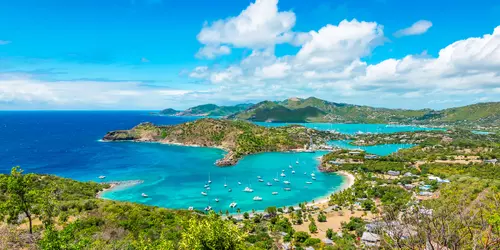The climate year of Caribbean
The Caribbean islands are located above the equator. In the northwest the archipelago is bordered by the Gulf of Mexico and in the east by the North Atlantic Ocean. About 70 islands - and countless rocky islets, atolls and reefs - covering a total land area of about 235,000 square kilometers are part of the Caribbean, or the West Indies, as they were formerly known. The first European conquerors believed to have found the western sea route to India - that is why the Caribbean is also called "West Indies". The western part of the Caribbean islands belongs to the Greater Antilles, the eastern islands to the Lesser Antilles. The latter, in turn, are assigned to the "Islands above the wind" or the "Islands below the wind" depending on whether they are subject to the influences of the northeast trade wind or not. Typically, the climate of the "islands above the wind" is more or less influenced by these winds and is therefore very humid, while on the "islands below the wind" a rather dry climate prevails. In general, however, the climate on all islands is subtropical to tropical, with a diurnal climate (as opposed to a seasonal climate).
General information about Caribbean
Due to the sheer size of the area, it is difficult to single out individual attractions. However, some generalized tips for activities can be given. For example, the beaches of the Caribbean are generally as the typical European imagines them: Fine, white sandy beaches surrounded by swaying palm trees and the sparkling, turquoise waters in front of them. in fact, almost all Caribbean islands, with the exception of Haiti, are excellent for a beach vacation. Divers will find fascinating spots almost off all Caribbean islands, worthwhile especially Belize and Bonaire. If you want to dive for wrecks, Grenada is the place to be. Also typical for the Caribbean is the carnival, which usually takes place at the end of February / beginning of March.
Tourism Caribbean
The climate in the Greater Antilles, which includes the islands Cuba, Puerto Rico, Jamaica, the Bahamas and Hispaniola (Dominican Republic and Haiti), is largely tropical. The average annual temperature for this region is about 25 °C, with a steady wind blowing year-round. Between July and October is hurricane season. The Lesser Antilles are lined up in an arc. The northeastern islands belong to the "islands above the wind", which are characterized by a warm and humid climate all year round. The southern "islands under the wind" are however rather dry and windless. The average annual temperature is 25 to 30 °C. Tropical cyclones can also occur between July and October.



